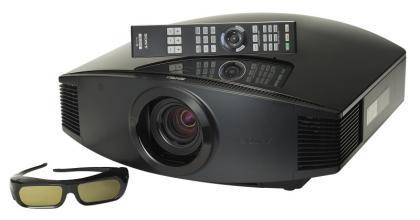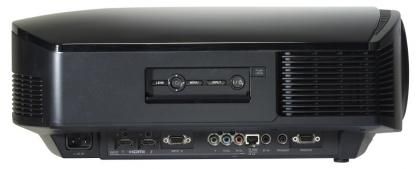Sony VPL-VW95ES review
Sony’s VPL-VW95ES home cinema projector is a huge active 3D unit that weighs a monstrous 11kg, and you’ll struggle to fit it on a coffee table. However, if you’re serious about cinema and have the space, it could have everything you’re looking for in a projector.
Aside from some great looks, thanks to a smooth elliptical design and centrally mounted lens, the VW95ES has all the features you would expect from a high-end projector. It uses SXRD projection, Sony’s proprietary version of liquid crystal on silicon (LCOS), to throw a Full HD image up to 300in across from a distance of 7m. The lens is completely motorised, so you can adjust zoom, lens shift and focus using the comprehensive remote control. You can also save different zoom and focus settings for different aspect ratios, to match the projection to your content.

The remote is backlit, so you can easily find specific controls in the dark, and it has one-touch buttons for each of the nine picture modes. You can also adjust brightness and contrast without having to use the menus, although these are sensibly laid out so you won’t struggle to find a particular setting or option.

All the projector’s inputs are hidden under the outer rim of the main chassis, although they point outwards from the side so cable management could be a little tricky. With two HDMI ports, one component and one VGA, you should have no trouble connecting digital sources, although you’ll have to plug through an A/V amplifier to connect analogue video such as composite. There’s also an RJ45 connector for an external 3D transmitter, although because there’s already one integrated into the main unit, you shouldn’t need to use it unless you plan on putting the projector in an enclosure.

The main difference between this and the cheaper HW30ES is the higher dynamic contrast ratio of 150,000:1, which should make for some incredibly colourful images. It certainly helped during 2D video playback, which was highly impressive – despite the projector's relatively low 1,000 ANSI lumens brightness, colour reproduction was among the best we’ve seen from SXRD technology. Black levels were also superb, with visible shadow detail that isn’t always noticeable on less expensive projectors. With a correctly calibrated lens, high definition footage had jaw-dropping clarity and sharpness and no noticeable noise.